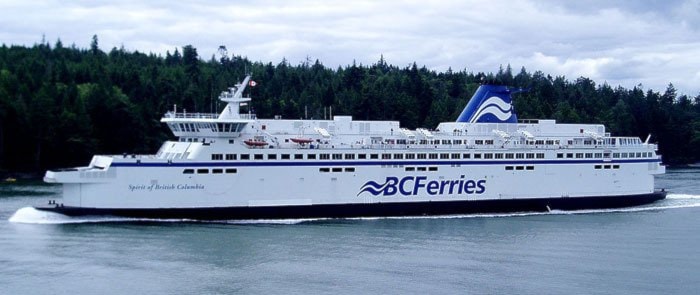BC Ferries plans to continue its campaign of price promotions this fall and next spring in an effort to maintain increased passenger and vehicle traffic.
First-quarter results for the Crown corporation show passenger traffic up 2.5 per cent and vehicle loads up 5.1 per cent for the three months ended June 30, compared with the same period in 2015.
Buoyed by a strong tourist year for B.C. and no net fare increase, BC Ferries carried 5.3 million passengers and 2.1 million vehicles in April, May and June. The 1.9 per cent average fare hike was erased by a reduced fuel surcharge due to long-term contracts for cheaper diesel fuel.
Helped by reduced operating costs and higher retail sales from terminals and on-board gift shops, net earnings were $27 million for the quarter, up from $18.8 million in the same period last year. Revenues were up 4.9 per cent to $219 million, while costs for the quarter went up 1.5 per cent to $178.6 million.
BC Ferries CEO Mike Corrigan released the first-quarter results at the corporation's annual meeting in Victoria, where he also announced that unspecified pricing promotions will be offered this fall and next spring. This year BC Ferries has been offering discounts on over-length vehicles pulling boats or travel trailers.
Corrigan also announced he will be stepping down as CEO at the end of the fiscal year next March. He was promoted in 2012 to replace former CEO David Hahn, and presided over a controversial service review that saw sailings reduced on money-losing routes.
Transportation Minister Todd Stone praised Corrigan for reducing operating costs and embracing new technology, including three new medium-sized ferries using liquefied natural gas fuel that have been built in Poland.
LNG retrofits are also scheduled for the Spirit of B.C. and the Spirit of Vancouver Island, the workhorses of the main Tswassen-to-Vancouver Island route.
Corrigan's term also saw the first cable ferry in the BC Ferries fleet, the Baynes Sound Connector to Denman Island. Stone said the cable ferry cut fuel costs by half.



